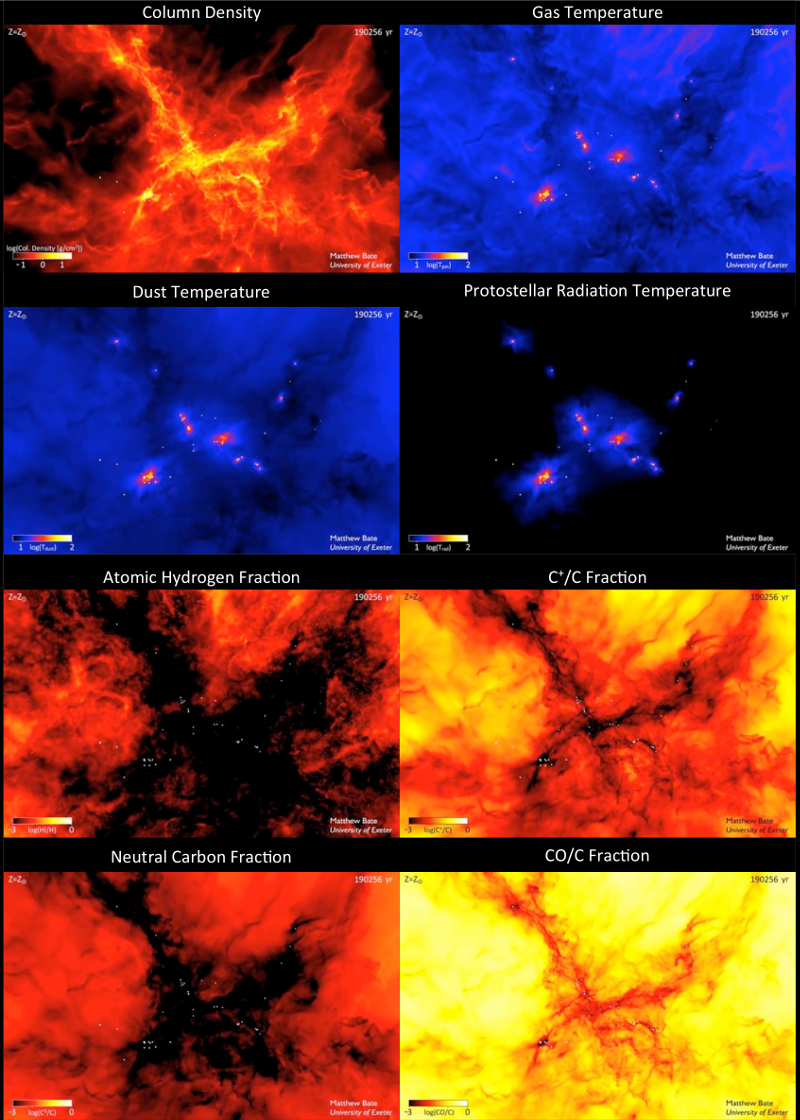| EPoS Contribution |
|
Combining radiative transfer and a diffuse ISM model to simulate star cluster formation
Matthew Bate U Exeter, Exeter, GB | |
| Over the past few years, hydrodynamical calculations of star formation and/or molecular cloud evolution have tended to use one of two methods to model the thermodynamics of the gas. Either they use a thermochemical model of the diffuse interstellar medium (ISM) but exclude heating from protostars, or they include radiative transfer from protostars but treat the low-density ISM as isothermal. Recently, we have developed a new method that combines these two approaches in order to more accurately model the thermodynamics of molecular clouds during star cluster formation. I will briefly describe the main aspects of the method, and then present new results from simulations of star cluster formation and compare them to results from earlier more simplified calculations and observations. | |
 | |
| Caption: A snapshot from a calculation of star cluster formation performed using the new method which, amongst other quantities, now allows us to produce maps of gas density, gas temperature, dust temperature, the protostellar radiation field, the fractions of atomic and molecular hydrogen, and the abundances of carbon in the forms of C+, neutral carbon and CO. | |
| Collaborators: E. Keto, CfA, USA |
Suggested Session:
Cluster Formation |

